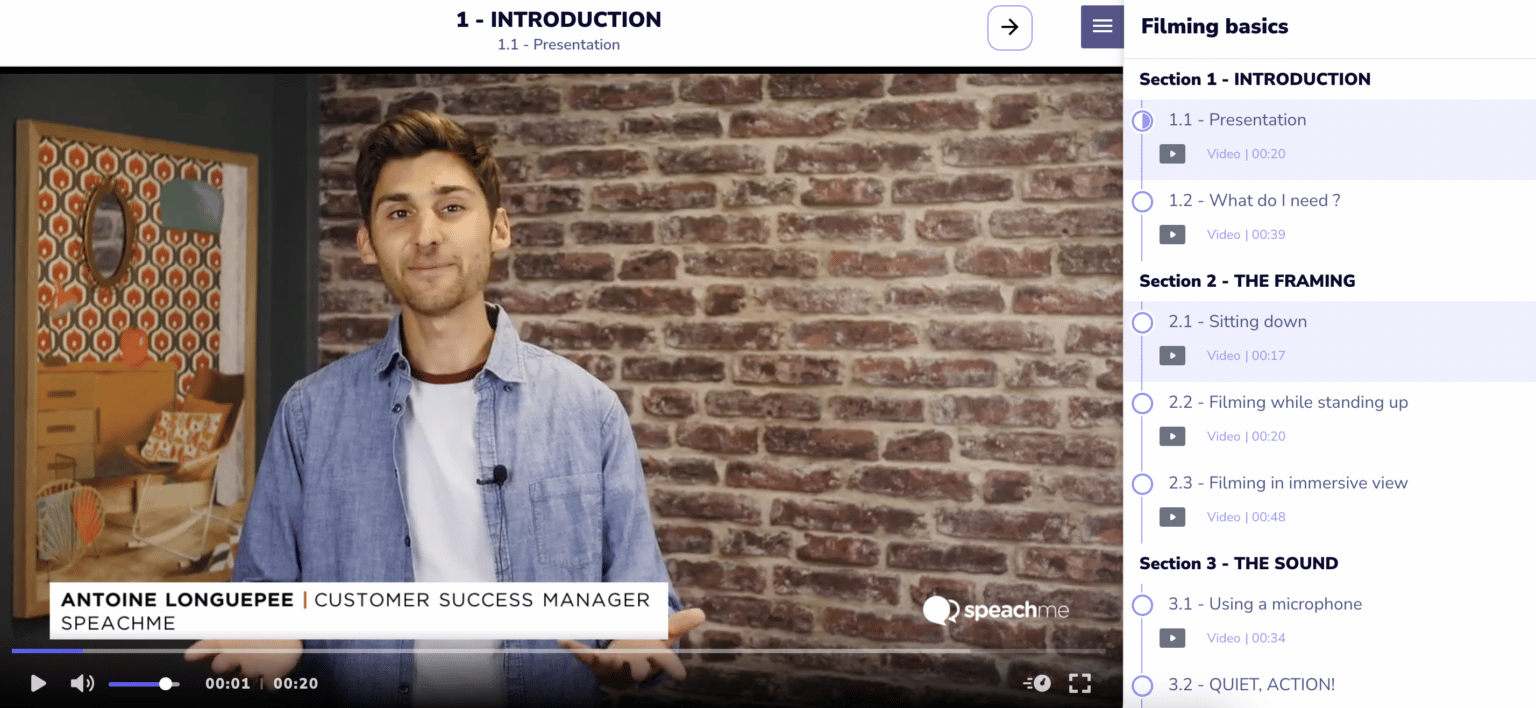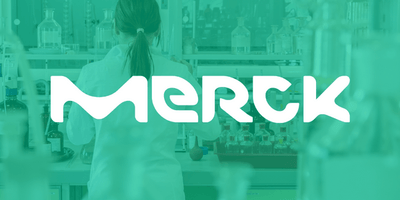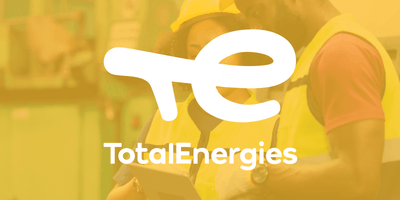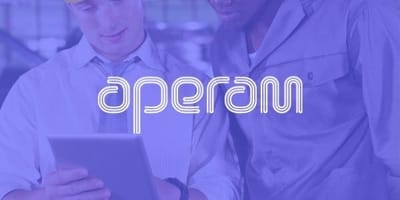Agile learning constantly iterates by implementing continuous feedback loops, creating highly efficient and collaborative environments.
What is Agile Learning?
Don’t dismiss “agile learning” as another passing fad or buzzword. In fact, agile learning is one of the most important resources for learning and development experts to leverage in today’s constantly-changing world.
Agile learning derives from agile project management, a system that originated in software development. It is a quickly-moving project management system that systematically designs, builds, and tests products. As the project moves forward goals are changed, additions are made, and other items may be edited along the way.
An article by Training Industry describes agile learning as combining “speed, flexibility, and collaboration.” Agile learning implements “continuous feedback loops to regularly iterate on course creation and create highly collaborative working environments.”
Put another way, Pentablog described agile learning as “continuous and incremental training that helps employees faster adapt to changes in an agile environment. It helps them become more flexible, adaptable, increasing their technical and soft skills to better respond to new challenges.”
A Quick History of Agile Learning
Born in 2001, agile was originally a project management style that was a product of the software development industry. It was created to develop software in chunks, iterating and providing feedback in each chunk, to keep the development process rolling forward continuously.
This varied wildly from the waterfall method traditionally used in software development before agile. With waterfall, teams would set a goal to create a product and work toward that goal without making changes or additions throughout the process.
Waterfall is cumbersome, time consuming, and often results in a final product that is outdated by the time development is complete years later. This is why the advent of agile was such a game changer for the software industry.
15 Benefits of Agile Learning

With indisputable evidence for agile learning, companies would be wise not to ignore the many benefits. We’ve seen agile learning methods expand from their origins in software development, to other areas within the organization. Here are a few reasons why.
1. Agile learning allows you to respond quickly to change
Today’s world is relentlessly fast-changing. As a result of this, organizations and companies must be agile in order to not only thrive but survive. Agile is the perfect answer to today’s fast pace because it is flexible and adaptable by nature.
When equipped with an agile mindset, organizations can react quickly when new technologies, developments, economic conditions, and other market changes occur – all while launching programs quickly.
2. Agile learning supports rapid upskilling and reskilling
When your organization can iterate and adapt rapidly, it allows you to update your training rapidly to effect those changes as quickly as possible.
Agile learning transfers knowledge from SMEs to others quickly, efficiently, and effectively. When new knowledge, processes, and improvements arise they must be disseminated quickly as agile learning necessitates.
3. Agile learning improves communication cross-functionally
Agile teams collaborate and communicate continuously, which noticeably breaks down barriers between siloed departments and teams. Given that project teams can spend 20 hours or more attempting to collaborate and communicate effectively, improving this area will have far-reaching positive impacts.
4. Agile learning puts the consumer first
Customer needs are constantly changing and evolving. The reactivity and quick responsiveness of agile learning makes it possible for companies to adapt to customer needs – quickly. Your sales and marketing teams will be thrilled to communicate this to their customers.
These teams will also be able to collect customer feedback, iterate using it, and build a better product or service that sharply reflects what consumers currently want and need.
5. Agile learning improves efficiency of orgs
Unlike traditional waterfall methodologies, agile learning gives teams and orgs several changes to identify updates, changes, and additions as the product development progresses.
Traditionally teams were asked to identify issues at the outset of product design and development – essentially never to revisit this stage again. Agile necessitates regular – daily – meetings to discuss such issues and quickly resolve them.
Agile development is inherently experimental. Once employees see that such risk taking isn’t just okay, but encouraged, you’ll see process and workflow improvements and efficiencies that wouldn’t have been developed with traditional methods.
6. Agile learning improves peer learning
Peer learning is an important tenet of agile learning in the workplace because it engages employees in a way that allows them to better retain information, in addition to facilitating connections and collaboration between each other and within the organization’s network. It’s even thought that peer learning accounts for a majority of the knowledge gained by most adults.
Agile learning requires daily meetings, called scrums, where each member answers three questions:
- What did I do yesterday?
- What will I do today?
- What roadblock am I facing?
Simply answering these three questions daily with your group of peers will foster connections and improve peer learning.
7. Agile learning makes your entire org more agile
Peer learning is an important tenet of agile learning in the workplace because it engages employees in a way that allows them to better retain information, in addition to facilitating connections and collaboration between each other and within the organization’s network. It’s even thought that peer learning accounts for a majority of the knowledge gained by most adults.
Lately, and moving forward, organizations have had to manage the acceleration of change of pace. To do this they need to ensure that their entire workforce has the mindset of agility, and is ready to re-work and conceptualize and try new things – risky things.
Think about it: how can your organization become agile if the people that make it up are not? It’s up to you to empower your L&D team to develop an agile environment where employees can learn and take risks.
8. Agile learning is flexible

The iterative nature of agile learning creates an incremental process. These increments allow your teams to make adjustments while developing the product.
The ability to regularly make adjustments is so important. Now teams can make decisions as your organization grows, learns, and creates and changes goals. You have the flexibility to course-correct and stick to your company’s values and goals, even as they change.
9. Agile learning is not stringent
Agile learning also promotes organizational flexibility by giving employees the freedom and space to take risks and experiment. Once your teams realize there is no “right way” to do something you can truly begin to explore and brainstorm and revolutionize the way things are done.
Remember, there is no “right way” to approach agile learning.
10. Agile learning promotes better training
Agile learning provides Learning and Development teams the chance to create content based on your company’s most important needs right now. You can quickly create video tutorials and trainings, and everyone in your workforce can be on the same page instantaneously.
You can create videos based on problems just identified, staying ahead of the problem and reaching a quick resolution.
11. Agile learning prioritizes collaboration
By its very nature – daily meetings, constant iteration – agile learning is heavily collaborative. Agile allows employees at all levels access to digital learning courses and trainings.
Employees should offer feedback and requests for trainings, and L&D teams should react quickly and try to understand skills and knowledge gaps. Constant evaluation will tell you what is needed and what could be improved and what needs to be shared and learned.
12. Agile learning makes the learning process more effective
Agile learning requires a bottom-up training approach where employees dictate what they need to learn, as opposed to a traditional top-down approach to enterprise training.
The bottom-up approach of agile learning facilitates individualism and prioritizes personal ingenuity in ways that traditional methods completely fail to.
13. Agile learning promotes knowledge sharing
Agile learning gives space for your employees to share their knowledge by simultaneously learning from and teaching one another. Sharing knowledge and skills is encouraged and part of daily scrums. You can also officially set up knowledge-sharing events, even remotely. Everyone in your organization has unique skills and ideas and ways of doing things. Capitalize on everyone’s knowledge and share best practices!
14. Agile learning fosters creativity
Agile learning fosters creativity because it allows all employees to offer input so they feel more invested in their work and connected to their peers. At the same time, constant collaboration brings fresh ideas from people who previously were not included in such conversations.
15. Agile learning makes learning a faster process
Agile learning helps your L&D team speed up course creation by focusing on the rapid iteration of ideas, which accelerates the process of creating and refining programs. By using iterative design to make frequent, small changes, your team can launch programs faster, and your employees will have a higher quantity and quality of coursework at their disposal.
Learning happens faster in organizations that adopt agile learning. Trainings are short, concise, targeted, and reviewed and revised regularly. Feedback is also delivered faster and able to be taken into consideration quickly, improving the learning experience.
Agile learning and rapid iteration help Learning and Development teams to create and refine courses and trainings quickly. L&D teams can make small changes very frequently to video trainings, ensuring content is up-to-date.

How does my company develop an agile learning environment?
1. Make sure your org is on board
Identify the decision-makers in your organization and present to them the benefits of agile learning. Make sure you have their backing before getting started. Next, go right to your Learning and Development team to get them on the same page as you and the decision-makers. They are the fast-moving team that will be creating all of the training content, reviewing it, and re-filming as the need arises.
2. Make sure Product and Project Managers have clear plans and support
Moving from traditional to agile learning methods will take effort and time. Provide unflinching support for those on the front lines of this change, such as sales, marketing, management, and more. Provide them with a clear plan to move from traditional methodologies towards agile learning. Answer any questions employees may have.
3. Get started without trying to perfect things first
Agile is all about iteration. In the spirit of navigating away from traditional methods and toward agile, get started before things feel “perfect.” Chances are, like with everything in life, you won’t feel 100% about anything before you dive in. So just get started. The beauty is, once you get started, you improve upon what you initially built and never stop improving. You have space for growth!
4. Break trainings up into smaller chunks
We know that agile means constantly creating and updating training content. Make this process easier on the content creators and the employees watching the content by breaking it up into small sections. When you do this, employees can learn at their own pace and re-watch sections as needed. They may need to access this content on the manufacturing floor or else while on the job, so it’s imperative that this information be easily accessible. Another benefit of breaking information into smaller bits is that you can re-record and replace small chunks of video, as opposed to a full-length video training. This is much more time effective.
5. Allow several contributors to create training materials
When several people have a say in training content creation you ensure that all roles and points of view are taken into consideration. You are much less likely to make a mistake with several minds contributing.
Gather your SMEs to contribute to video training materials together.
6. Celebrate learning milestones together
Moving to agile learning methods is a process. Celebrate the steps along the way together! Set goals and openly acknowledge and reward their attainment. Have fun, and embrace the lack of monotony!
Summary
Agile learning is a product of the software development industry. Created to develop software in chunks, agile entails iterating and providing feedback in each chunk to keep the development process rolling forward continuously. Unlike traditional waterfall methods, agile allows for goals to be changed, additions made, and other items to be edited throughout the development process.
There are countless benefits to creating an agile learning environment, such as flexibility, proficiency, efficiency, fast course-corrections, providing upskilling opportunities, and cost reductions.
Take steps to ensure your organization develops its own agile mindset and methodology. As we’ve seen, it’s proven to provide a learning environment unparalleled to those of the past.
Agile learning and rapid iteration help Learning and Development teams to create and refine courses and trainings quickly. L&D teams can make small changes very frequently to video trainings, ensuring content is up-to-date.





